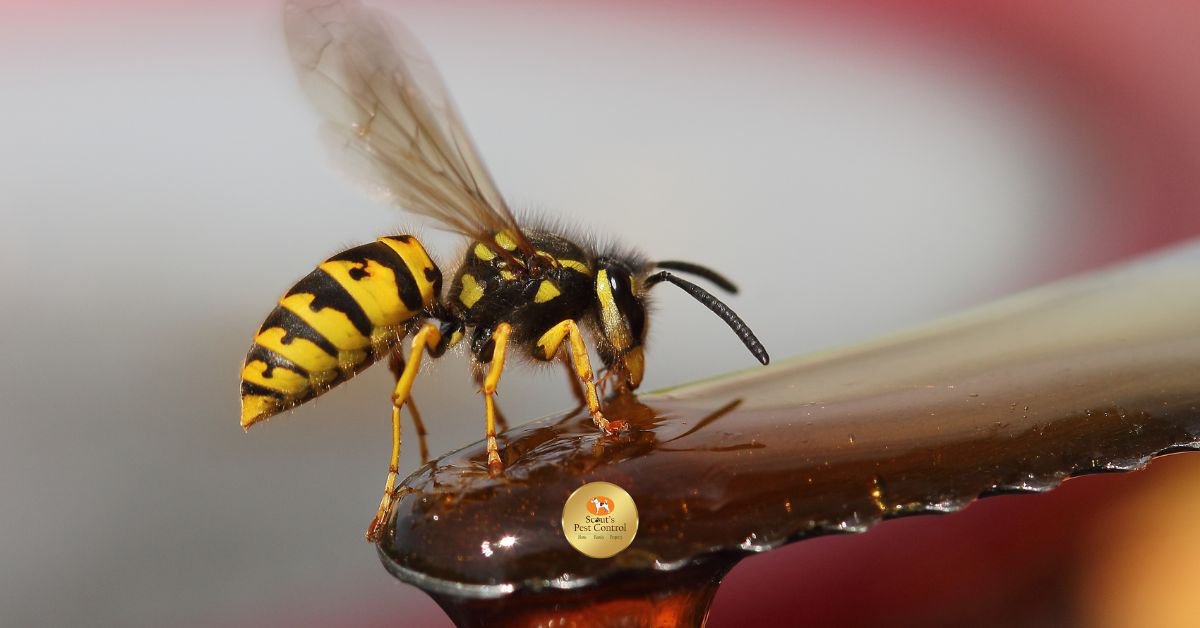Some Bite and Some Sting, but all of these pests cause pain!
Not only does South Carolina offer an attractive climate and flourishing plant life, but it also attracts a diverse range of harmful insects. From lurking in the shadows of your residence to buzzing around your yard, these pesky intruders have the ability to transform your peaceful dwelling into a breeding ground of discomfort and sickness. At Scouts Pest Control in Greenville, we are dedicated to helping you reclaim your home from these unwanted invaders. We have compiled this short guide to exemplify the types of stinging insects you should be aware of in our area.
Stinging Pests and Biting Guests
Among the many culprits, mosquitoes, hornets, and yellow jackets are the primary stinging insects that South Carolina homeowners have to contend with. Each brings its own set of challenges, but rest assured, a solution is at hand.
Mosquitoes: More than just a nuisance

South Carolina is unfortunately well-acquainted with mosquitoes. Besides disrupting your outdoor activities with their incessant buzzing and painful bites, these insects are also carriers of dangerous diseases such as West Nile Virus and Zika. Their ability to breed in any stagnant water source makes it challenging to manage them without professional help. In fact, mosquitoes can breed in a mere thimble of water. It is imperative to take the threat of mosquito infestations seriously.
Scouts Pest Control employs comprehensive strategies, including eliminating breeding sites and using safe, eco-friendly sprays, to curtail the mosquito population around your home. Our vigilant follow-ups ensure these pests do not reestablish themselves, safeguarding you and your family from potential health risks.
Hornets: Unwelcome Stinging pests with painful stings

Hornets are larger cousins of the wasp family, easily identifiable by their size and distinct color patterns. Their sting can cause severe pain and allergic reactions in some people. They build paper-like nests in trees, shrubs, and sometimes in buildings, making your home their own if not promptly addressed. Many people often decide to have a go at removing the nests on their own. However, this can become very difficult and could cause further issues. These are one of the worst stinging pests in our area.
We are trained to locate and remove hornet nests safely. We also help in fortifying your home against future invasions, providing you peace of mind knowing that your space is secure.
Yellow Jackets: Small size, big problem

Yellow jackets, with their recognizable yellow and black markings, are small but formidable wasps known for their aggressive behavior. Frequently, they build their nests inside our residences, posing a risk to our health due to their painful stings which could also cause allergies, and in the event of a serious reaction – death. These guys are serious stinging pests that you do not want in your home.
The constant presence of these wasps can create a psychologically distressing environment, filled with unease and the fear of potential stings. Yet, they also play a role in controlling other pests in nature, demonstrating their value when in the right environment. The importance of safeguarding our homes from yellow jackets cannot be overstated. It's crucial we invest in preventative measures, ensuring our homes are secure and our loved ones are safe from these fierce insects. This isn't just about pest control—it's about our commitment to the safety and well-being of our families.
At Scouts, we prioritize your safety. Our team conducts a thorough inspection to find hidden nests and employs safe, effective treatments to eliminate the yellow jacket threat. Our preventative measures ensure these intruders don’t return, allowing you to enjoy your home and garden without worry.
Fire Ants: The Ground Dwellers
When considering pests, it's important not to overlook those that dwell beneath our feet. Fire ants, a common sight in South Carolina, pose a significant threat to homeowners. They are also on our top list of stinging pests and they are Identified by their red-brown color and aggressive nature, fire ants construct large mound-like nests and deliver painful, burning stings when disturbed.

While these ants are typically outdoor pests, they can make their way into homes in search of food and shelter. Their stings can cause severe discomfort and, in rare cases, trigger allergic reactions. If you notice large, irregular mounds in your yard or experience sudden, unexplained ant bites, you may have a fire ant problem.
Carpenter Bees: The Silent Destroyers

Carpenter bees are a unique breed of stinging pests, not because of their sting, which is rarely used, but due to the structural damage they can cause. These large, black, and yellow bees bore into wood to create nesting sites. Over time, they can cause significant structural damage to your home.
Unlike most other bees, Carpenter bees are solitary creatures. They don't build hives, but instead, each female bee bores individual holes for her eggs. Though their stings are rare and usually not dangerous (unless one has an allergy), their potential for property damage makes them a pest worth attention.
Bed Bugs: The Hidden Terror
While they don’t sting or bite like other pests on this list, bed bugs can still cause significant distress to homeowners. These tiny, flat, brown bugs hide in mattresses, furniture, and cracks during the day and emerge at night to feed on human blood.

